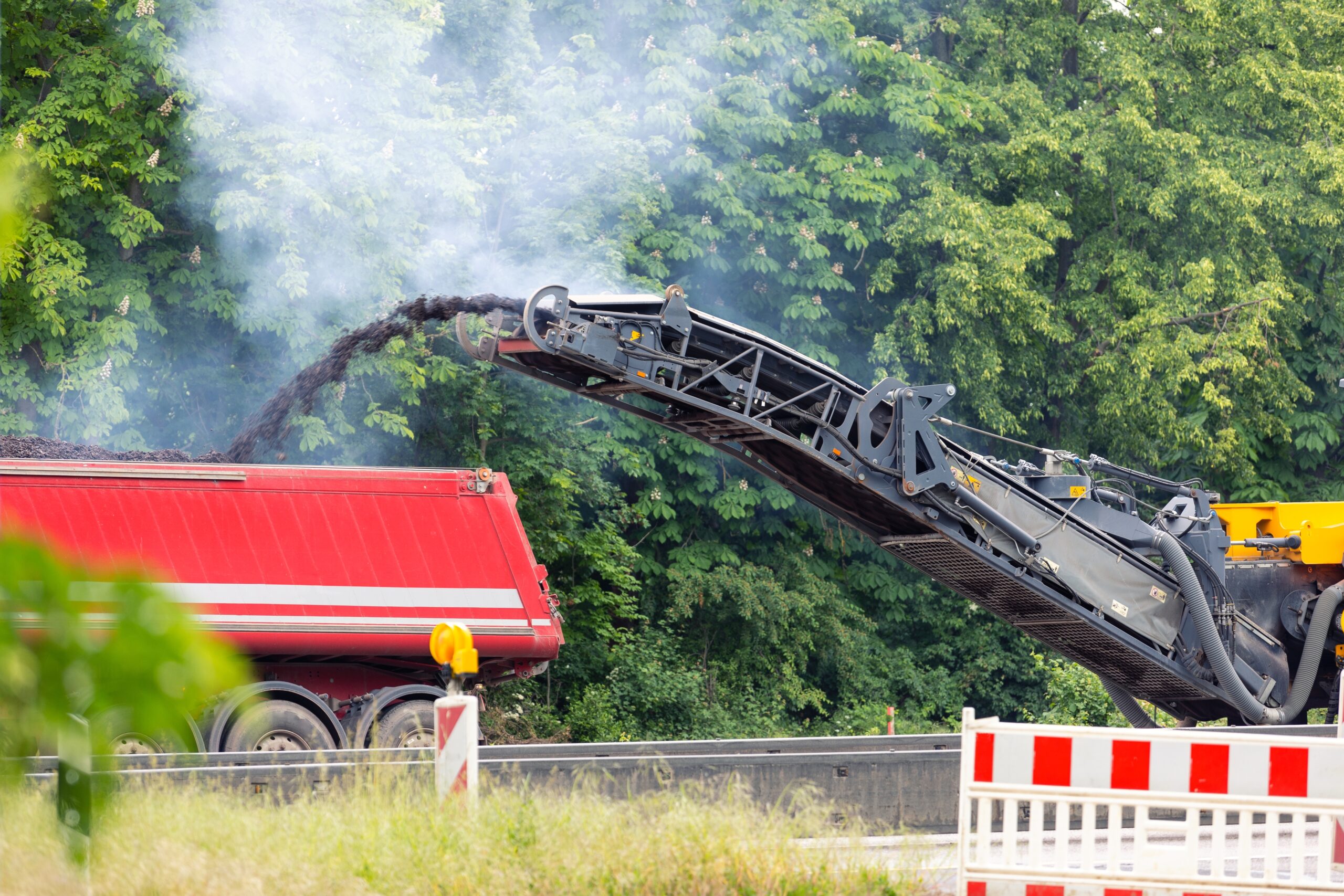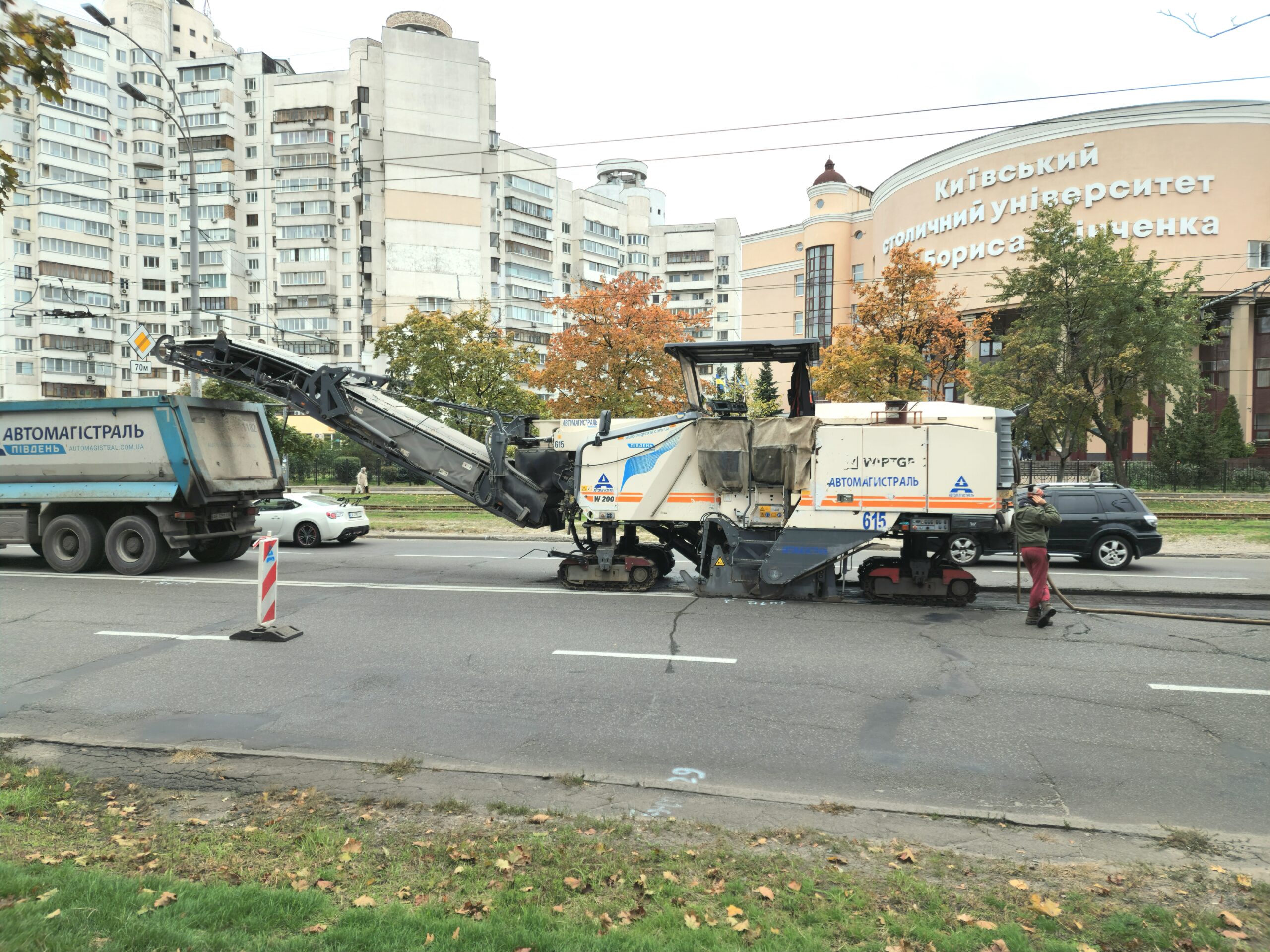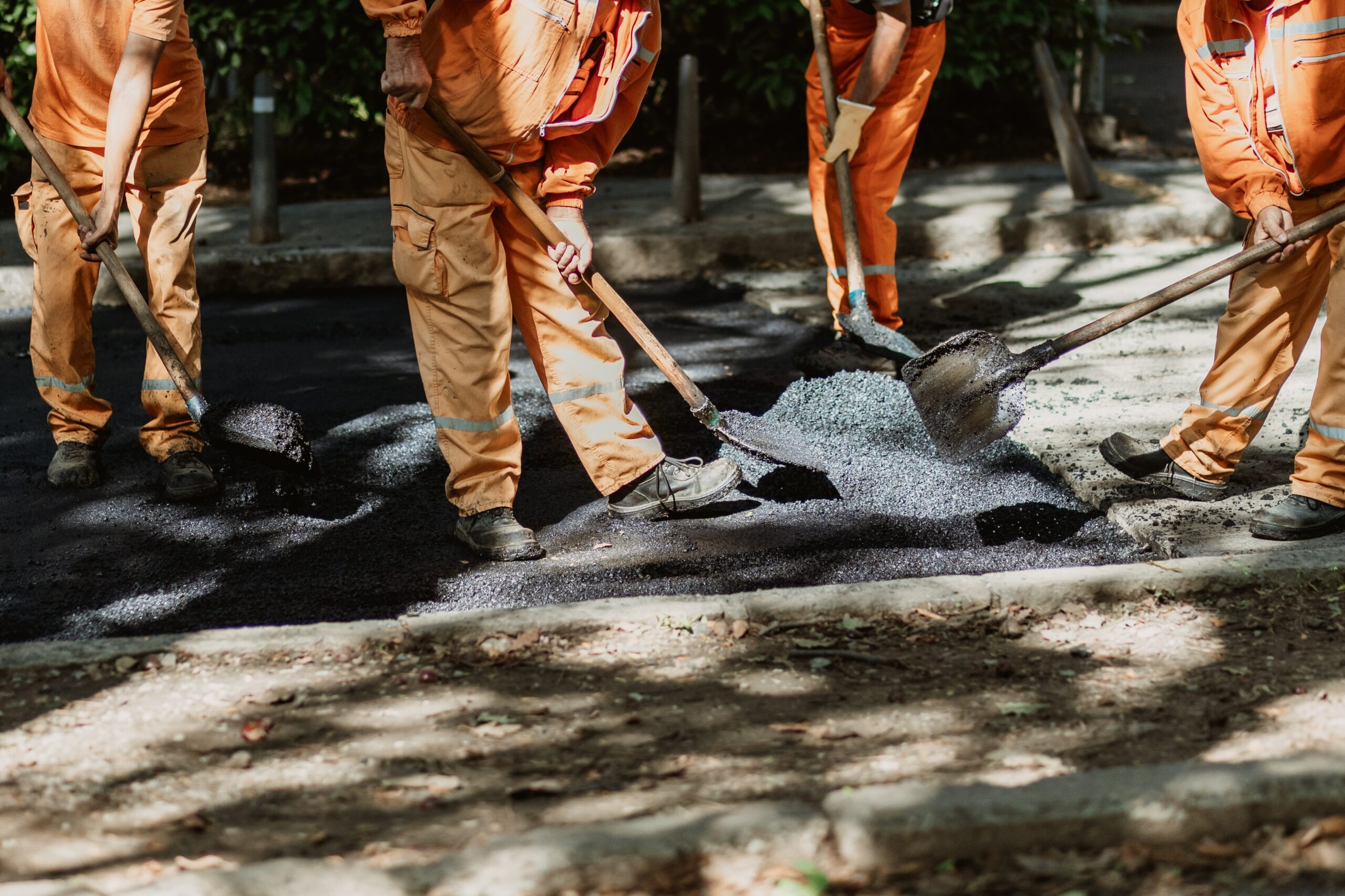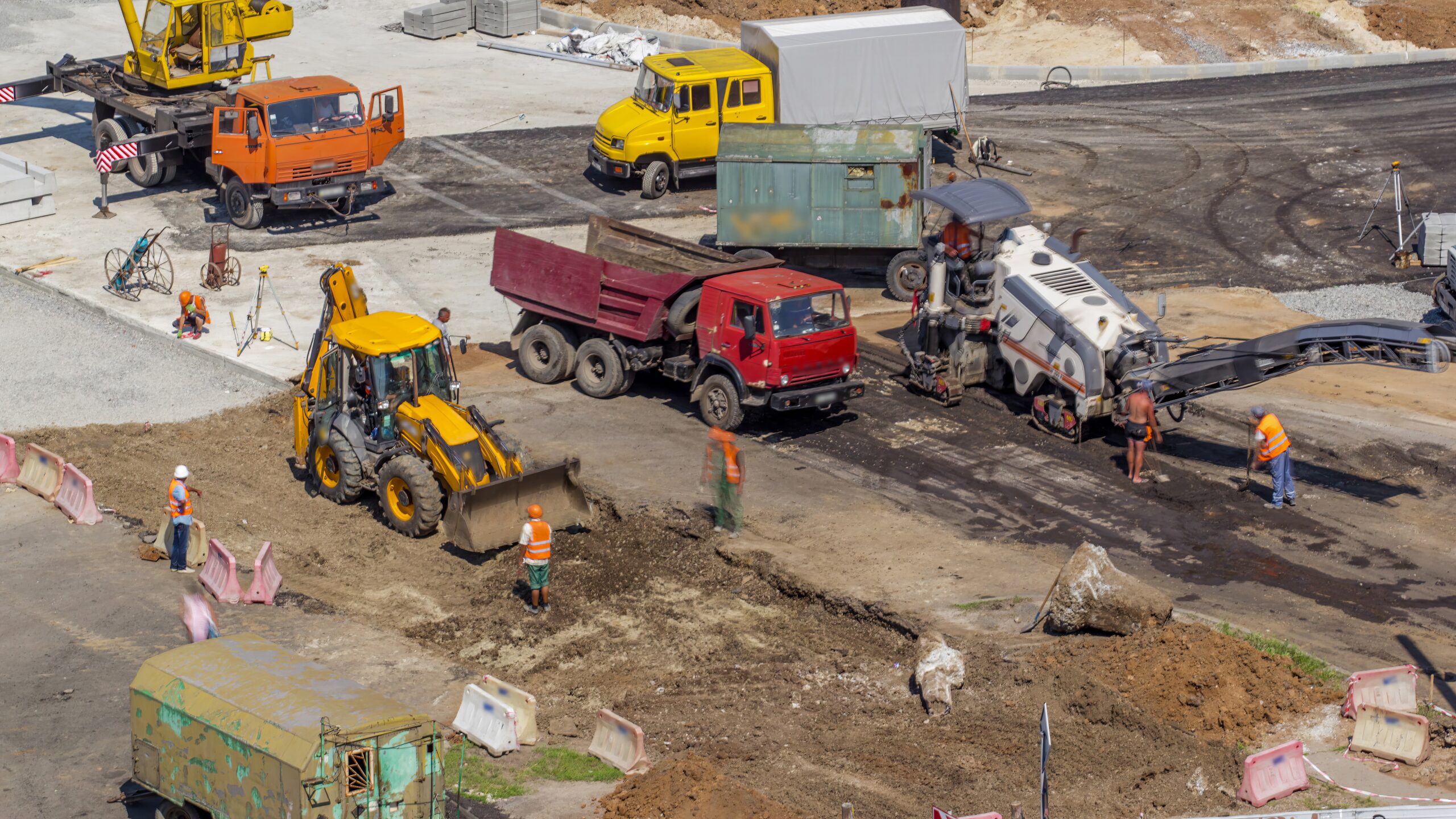
Property owners and managers need to understand best time to pave a commercial driveway to minimize disruptions and ensure efficient project completion. Among the various pavement rehabilitation methods, colorado spring mill and pave services provide a cost-effective and sustainable solution to restore surface integrity and prolong pavement lifespan. However, a common question remains:
The duration of a milling and paving project depends on several factors, including project size, existing pavement condition, weather, material availability, and traffic control requirements. Small-scale projects, such as residential driveways, can typically be completed in a day, while commercial parking lots may require two to three days. Large-scale roadway projects, particularly those conducted in phases, can extend over several weeks.
Let’s explore the key factors influencing milling and paving timelines.
Understanding the Mill & Pave Process
The mill & pave process is a cost-effective and sustainable method for renewing asphalt surfaces without complete reconstruction. It removes the damaged top layers and replaces them with a fresh layer of asphalt, ensuring a smoother, safer, and longer-lasting surface.
The mill & pave process consists of two primary stages: milling (also known as grinding or cold planing) and paving (overlaying).
Milling Process
This initial step involves the controlled removal of a specified depth of the existing asphalt pavement surface using specialized milling machines. These machines utilize rotating drums equipped with carbide teeth to precisely grind off the deteriorated asphalt layer. Milling achieves several critical objectives:
- Removal of Surface Distress: Eliminates cracks, ruts, potholes, and uneven pavement to create a stable base for the new asphalt overlay.
- Preservation of Pavement Profile: Corrects minor surface irregularities to improve drainage and ride quality.
- Recycling of Milled Asphalt (RAP): The removed asphalt, known as reclaimed asphalt pavement (RAP), is often recycled into new asphalt mixes, promoting sustainability and cost efficiency.
- Ensuring Proper Overlay Thickness: Milling to a specified depth ensures that the new asphalt layer is applied at the correct thickness for long-term performance.
Paving Process
Following the milling operation, the newly exposed surface is meticulously cleaned and prepared. This may involve minor repairs to the underlying base, if necessary, and the application of a tack coat to promote bonding between the old and new asphalt layers. The paving stage then involves:
- Placement of Hot Mix Asphalt (HMA): The HMA, engineered to meet project specifications, is placed over the prepared surface using state-of-the-art paving machines. These machines ensure an even distribution of asphalt at the required thickness.
- Compaction: Immediately after placement, the asphalt is compacted using vibratory and pneumatic rollers to achieve the required density, stability, and smoothness. Proper compaction enhances load-bearing capacity and pavement longevity.
- Joint Construction: For large-scale projects, special attention is given to joint construction to create seamless, structurally sound connections between pavement sections.
- Cooling and Curing: The freshly paved surface requires sufficient cooling and curing time before accommodating heavy traffic. This duration depends on ambient temperatures and asphalt mix properties.
By following this systematic process, Asphalt Coatings Company ensures a high-quality, durable, and efficient pavement restoration.
Factors Influencing the Duration of a Mill & Pave Project: Variables at Play

The duration of a mill & pave project is not fixed; it is influenced by a range of factors that can either expedite or extend the timeline. Understanding these variables is crucial for accurate project scheduling and management.
Project Size and Scope
Larger projects naturally require more time to complete. A residential driveway may be resurfaced within a day, whereas mill and pave in Greeley or roadway segments can take several days or weeks, depending on the area to be milled and paved.Additionally, the asphalt milling vs full repaving cost influences the overall duration.
Condition of Existing Pavement
The extent of pavement deterioration significantly affects project timelines. Severe cracking, potholes, rutting, or base failures necessitate additional repairs before paving. Addressing these issues may involve full-depth patching or sub-base stabilization, increasing the overall time frame.
Weather Conditions
Weather plays a crucial role in asphalt paving operations in Aurora. Ideal conditions include warm, dry weather, as excessive moisture, cold temperatures, or extreme heat can disrupt the process. How weather affects your parking lot’s condition explains how rain delays paving activities, cold temperatures hinder asphalt compaction, and high heat may cause material instability. Monitoring weather forecasts and scheduling projects within optimal asphalt paving weather windows minimizes disruptions.
Material and Equipment Availability
Timely access to asphalt materials, aggregates, and construction equipment is essential for maintaining efficiency. Delays in material procurement or equipment mobilization can extend project timelines. Asphalt Coatings Company works with trusted suppliers and maintains a well-equipped fleet to mitigate potential delays.
Traffic Management and Site Access
Milling and paving projects in high-traffic areas require strategic traffic control measures to ensure safety and efficiency. Lane closures, detours, and restricted access points may prolong project duration but are necessary for maintaining a safe work zone. Proper coordination minimizes disruptions and accelerates completion.
Project Complexity and Phasing
Projects with intricate layouts or operational constraints may require phased construction to maintain site functionality. Multi-phase projects, often implemented to minimize disruptions to businesses and traffic flow, naturally extend the total duration compared to single-phase paving operations.
Typical Timeframes for Mill & Pave Projects: From Driveways to Roadways
While every project is unique, general time frames can provide an initial understanding of typical durations based on project scale. However, these estimates may vary due to factors such as pavement condition, milling depth, asphalt mix specifications, curing time, weather, and site accessibility.
Small-Scale Projects (Driveways, Small Parking Lots – Under 5,000 Sq. Ft.)
Small projects, including residential driveways and minor parking lots, typically take 1–2 days to complete. This timeframe includes milling, surface preparation, asphalt placement, and compaction. However, curing time varies based on asphalt mix and weather conditions.
- Curing Considerations: Light traffic may be allowed within 24–48 hours, but full curing can take up to 30 days, during which heavy vehicles and sharp turns should be avoided to prevent surface damage.
- Potential Delays: Unexpected subsurface deterioration, moisture-related issues, or scheduling conflicts with material delivery may extend the timeline.
Medium-Scale Projects (Commercial Parking Lots, Small Road Sections – 5,000 Sq. Ft. to 50,000 Sq. Ft.)
Mid-sized projects, such as commercial parking lots and municipal road sections, typically require 3–7 days to complete. These projects involve more extensive milling, asphalt placement, and increased traffic control measures.
- Traffic Management: In high-traffic areas, work may be completed in sections or overnight to minimize disruptions.
- Phased Construction: If businesses or public access areas must remain operational, paving may be performed in phases, extending the overall timeline.
- Additional Processes: Base repairs, leveling courses, or additional asphalt layers may increase project duration.
Large-Scale Projects (Major Roadways, Industrial Complexes, Large Parking Areas – Over 50,000 Sq. Ft.)
Extensive projects, such as highways, industrial parks, and multi-phase commercial developments, can take several weeks to a month or more due to increased complexity.
- Layered Paving: Roadway projects often require multiple asphalt layers, including a base, intermediate, and surface course, each with designated curing periods.
- Traffic Control & Phased Execution: Highways and arterial roads require detailed traffic management plans, lane closures, and possibly night work to expedite completion while ensuring safety.
- Weather & Material Logistics: Large projects depend on consistent material supply and optimal weather conditions for uninterrupted progress.
Frequently Asked Questions
How long does the milling portion of the project typically take?
The milling phase usually takes one to two days, depending on project size, pavement condition, and milling depth. Efficient equipment and planning help maintain the timeline, ensuring a smooth base for the new asphalt layer. Weather conditions may also impact the overall milling duration.
What is the usual duration for the paving (overlay) phase?
The paving phase typically lasts one to two days, influenced by road width, asphalt thickness, and traffic conditions. Proper compaction and ideal weather are crucial for durability. Larger projects may require additional time, ensuring a high-quality, long-lasting asphalt surface that meets performance and safety standards.
How many miles of arterial streets can be milled and overlaid in a year?
Cities typically resurface three to five miles of arterial roads annually, depending on funding, road conditions, and resources. Budget allocations, repair severity, and efficiency affect productivity. Strategic planning helps maximize coverage while minimizing traffic disruptions, ensuring road longevity and optimal pavement performance.
What is the daily production rate of a large milling machine?
Large milling machines can remove up to 15,000 square yards (13,000 square meters) daily, operating at about 75 feet per minute. Factors such as pavement hardness, milling depth, and machine efficiency influence output. Advanced equipment ensures precise material removal, optimizing timelines for subsequent paving operations.
How long before the work starts are parking restriction signs posted?
Parking restriction signs are usually posted 24 hours before work begins to ensure a clear work zone. Larger projects may provide earlier notices via announcements or flyers. This prevents delays, allowing crews to operate efficiently while minimizing inconvenience for residents, businesses, and commuters.
Partnering for Efficient Mill & Pave Projects

The duration of a mill & pave process is variable, influenced by project-specific factors ranging from size and complexity to weather and site conditions. However, with proper planning, experienced execution, and proactive management, the process can be completed efficiently, minimizing disruption and delivering a restored, high-quality pavement surface.
For property owners and managers in need of reliable and timely mill & pave services, Asphalt Coatings Company offers the expertise, resources, and commitment to ensure project success. Asphalt Coatings Company ensures efficient, high-quality resurfacing with minimal downtime. For a tailored estimate, contact Asphalt Coatings Company today!



